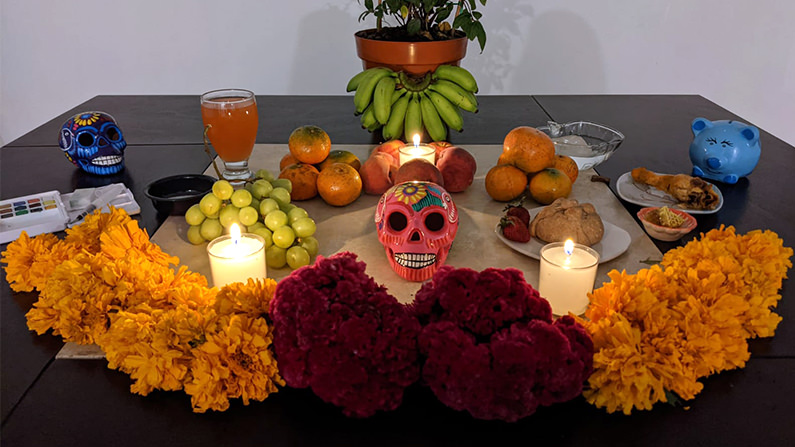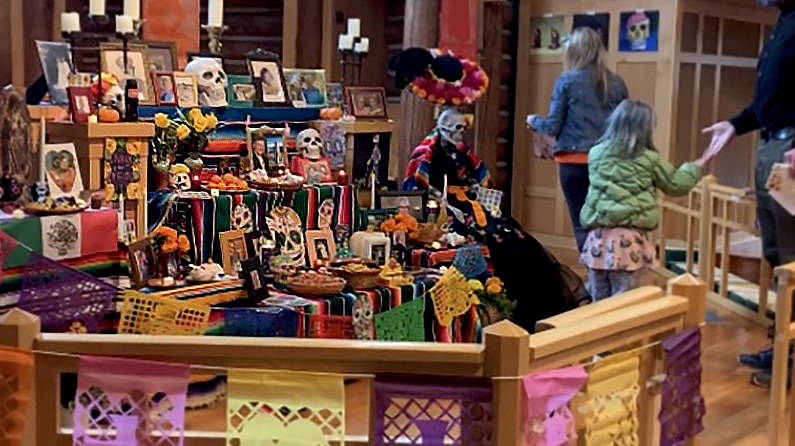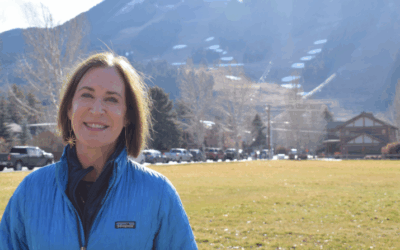The Mexican and Central American holiday Día de los Muertos, or the Day of the Dead, is observed each year on Nov. 1-2. KHOL Spanish-language correspondent Alicia Unger reports on a new expanded community celebration of the tradition in Jackson this year.
Listen above for an interview with Unger in English about the meaning of Día de los Muertos followed by her full feature story in Spanish. The following interview transcript has been edited for clarity and brevity.
KYLE MACKIE/KHOL: Alicia, thank you so much for reporting the story.
ALICIA UNGER: Oh no, thank you for taking interest in this special holiday, not only for the Mexican people but it’s becoming a worldwide celebration.
KHOL: Let’s talk about the celebration. I think a lot of people have heard of this holiday, the Day of the Dead, but can you tell us about its symbolism [and] its significance in Mexico?
UNGER: Yes. The Mexican culture has a very close relationship with death. They don’t believe that people die. They believe people live after death. So, there is a spiritual world. And what they do on the Day of the Dead, which is two days, they believe there is a portal that opens and that the spirits of your beloved ones [who have died] come to visit you. And they appreciate to come back to Earth and find their favorite food, their favorite drink. So, people do altars. They use this flower that is gold [a marigold]. We call it cempasúchil. And it has a very unique smell, which is believed to attract the spirits and the light will guide them.
It’s [a] very, very spiritual celebration, very colorful. It’s worldwide about now. And here in Jackson, they’ve been doing it for about 10 years from what I understood, and for the first time this year, they did something different. People were walking around to different altars that 10 organizations set up. The church of St. John’s Episcopal Church* built this beautiful altar, representing people who had passed in the community. The museum representing the pioneers of this city [also made an altar]. So it was a very, very interesting celebration.

An altar for Día de los Muertos in Tlaxcala, Mexico, where many of Jackson’s Latino residents trace their roots, features offerings of fruit and beverages paired with candles and marigold flowers. (Courtesy of Alyson Spery)
KHOL: Alicia, can I also ask you—you’re from Mexico City—did your family observe? Did you have an altar at home?
UNGER: Yes, actually, I do a very small [altar]. I just put a candle and some cempasúchil flower and some candy for my beloved ones, or fruit. It’s very small, but I try to do it often if I’m at home in that period of time—if I’m not going to celebrate in Mexico [laughs]. I tend to do [an altar for] my grandma, my father and my father in law.
KHOL: That’s a really beautiful tradition. Thank you so much for sharing some of your own celebration with us and for reporting this story.
UNGER: Thank you. And again, thank you for taking the interest in cultural celebrations for Mexico that are bringing the entire community of Jackson together.
*EDITOR’S NOTE: The audio version of this interview incorrectly identifies St. John’s as a Presbyterian rather than Episcopal church. Our apologies for the spoken error!







